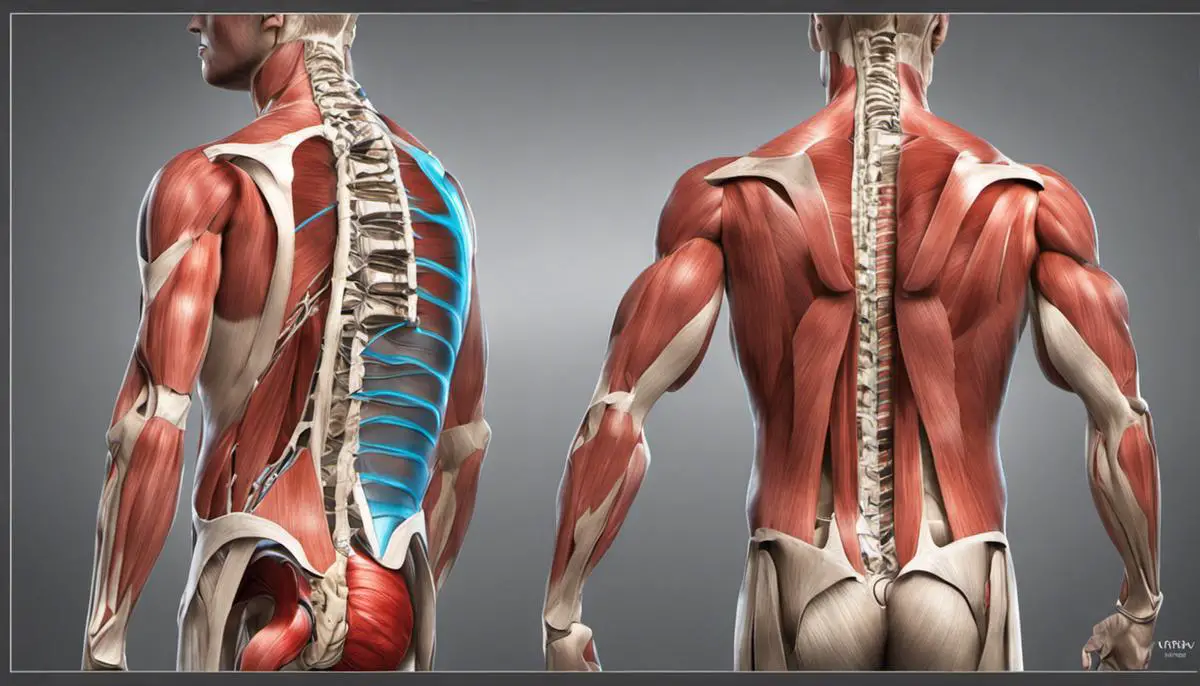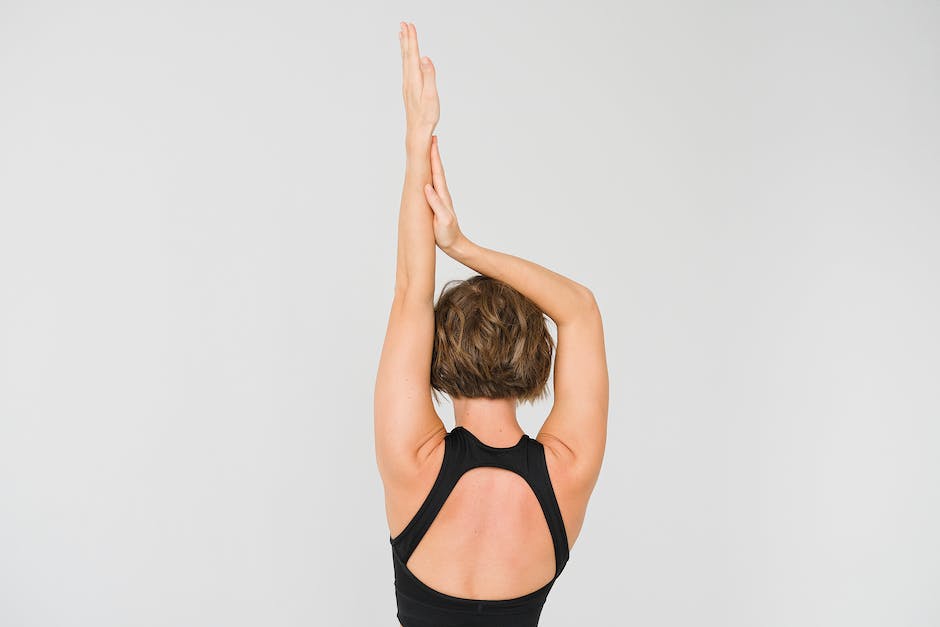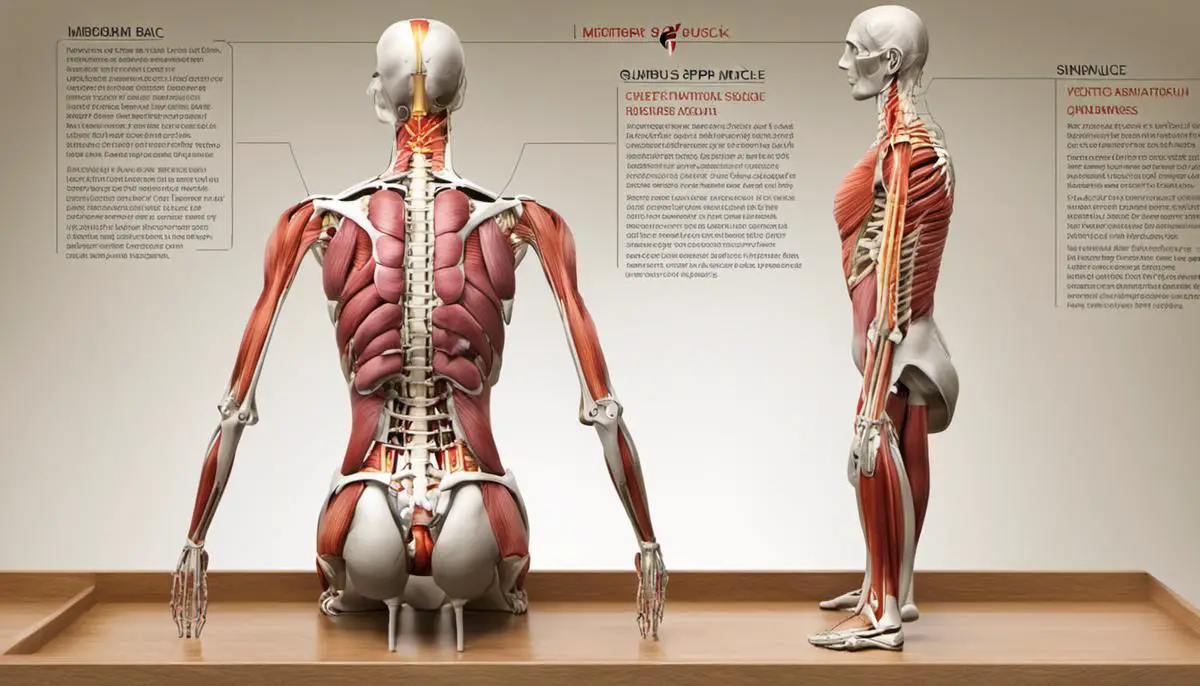Building strength in the lower back is an essential aspect of overall fitness and vital for performing daily activities without discomfort or risking injury. Understanding the anatomy of our lower back, including the erector spinae and the quadratus lumborum, deepens our knowledge of this integral area and helps us visualize how our actions and posture impact these muscle groups. This insight also allows us to undertake exercises like deadlifts, good mornings, back extensions, and hyperextensions with improved awareness and form. It’s not just about executing these exercises; it’s about doing them correctly, engaging the right muscles, maintaining posture and alignment, and staying tuned to our bodies to avoid over-strain. By combining this knowledge, we can formulate exercise plans that progressively and safely enhance our lower back strength and stability.
Understanding the Anatomy of the Lower Back
Understanding the Erector Spinae
The erector spinae is the key muscle group in your lower back and includes the iliocostalis, longissimus, and spinalis muscle. These long muscles run vertically along the length of the spine. They are responsible for keeping the spine erect, rotating the back, and aiding in side to side movement.
The iliocostalis is the furthest lateral muscle attaching the ribs and vertebrae to the pelvis. The Longissimus is located between the Iliocostalis and the Spinalis and is the largest muscle of the erector spinae. The Spinalis is the smallest and located most medially or closest to the spinal column.
These muscles collectively play significant roles in everyday movements such as lifting, twisting, and bending. Therefore, these muscles must be strengthened and conditioned.
Quadratus Lumborum and Its Function
The quadratus lumborum is a deep lower back muscle that connects the iliac bones of the pelvis to the 12th rib and the transverse processes of the lumbar vertebrae. It plays an essential part in stabilizing the lumbar spine, enabling standing and walking. It’s the muscle that primarily contributes to your ability to maintain good posture while standing upright. This muscle also assists in lateral spinal flexion, extension of the lumbar vertebral column, and hip hinging. A strong and flexible quadratus lumborum can help prevent lower back injuries and contribute to overall core stability.
Significance of Posture on Lower Back Muscles
Good posture plays a critical role in the health and function of the lower back muscles. Slumping or slouching can strain the erector spinae and quadratus lumborum, leading to pain, discomfort, and long-term damage. Conversely, maintaining upright and neutral posture distributes the body’s weight evenly and reduces stress on the spine and its supporting muscles. Good posture does not just involve standing upright; it’s equally important when sitting, lifting heavy items, and doing exercise, especially lower back exercises. Strengthening the core muscles, including the lower back, can significantly improve posture.
Potential Injuries Due to Incorrect Exercises
Incorrect execution of lower back exercises can lead to strain, sprain, or even herniated disks—conditions that can cause chronic pain and limit mobility. Overstraining the erector spinae and quadratus lumborum or using poor technique during exercises can easily lead to these issues.
Another common injury is a lower back strain, which is when the muscles and ligaments in your back get stretched too far. A similar injury, a lumbar sprain, occurs when ligaments are torn from their attachments.
Stressing these muscles repeatedly or with too much intensity can create microtears in the muscle tissue, causing a painful condition known as lumbar strain. Learning proper form and technique for lower back exercises is essential to avoid these problems. Regular stretching and strengthening exercises will help keep the lower back muscles strong and flexible, reducing the risk of injury. Remember to always warm up before exercising and cool down afterward to increase muscle suppleness.

Exploring Different Advanced Lower Back Exercises
Understanding the Importance of Lower Back Exercises
Lower back exercises are an effective way to strengthen the muscles that support the spine and improve overall stability. By performing advanced lower back exercises on a regular basis, individuals can alleviate existing back pain, reduce the risk of future injuries, and improve their posture. Some of the most efficient and effective exercises for the lower back include deadlifts, good mornings, back extensions, and hyperextensions.
Deadlifts – An Ultimate Back Strengthener
One of the best exercises for lower back strengthening is the deadlift. To do a deadlift, place a barbell on the ground and stand in front of it with your feet hip-width apart. Bend your knees and hips to lower your body and grab the barbell. Ensure your back is in a neutral position and your shoulders are slightly over the bar. Push through your heels to stand up straight, lifting the barbell as you do. Lower the barbell back to the ground to complete one rep. Aim for 4 sets of 12-15 reps.
Good Mornings – Strengthening the Posterior Chain
Good mornings are another beneficial exercise for the lower back. Stand upright with a barbell resting on your shoulders behind your neck. With knees slightly bent and feet hip-width apart, bend at the waist while keeping your back straight. Lean forward until your torso is parallel to the floor. Slowly raise your body back to the upright position to complete one rep. Similarly, aim for 4 sets of 10-15 reps.
Back Extensions – Isolating the Lower Back
Back extensions are a classic exercise for isolating the lower back muscles. For this exercise, a back extension machine is needed. Position your body in the machine with your feet secure and your upper body hanging over the edge. Lower your torso towards the ground, keeping your back straight, then lift your body back up by extending at the waist. Try to complete 3-4 sets of 15-20 reps.
Hyperextensions – Adding Depth to your Workout
Hypterextensions are a slight modification of the back extension. They are performed using the same machine, but the range of motion is increased. Start in the same position as the back extension, but instead of stopping at the top, continue to arch your back slightly to engage more muscles. Be careful not to overextend and risk injury. As always, control is key.
While these exercises are advanced, beginners shouldn’t be afraid to give them a try. However, the forms must be correct to avoid straining your back. Remember to warm up properly before starting your workout and stretch adequately to cool down after finishing. Challenge yourself but also listen to your body, and consult a trainer or a physical therapist if you face any difficulties. These exercises can greatly increase your strength and stability and support you in everyday activities and athletic endeavors.

Proper Execution and Form
Core Engagement: The Foundation of Lower Back Exercises
Warming up before any form of physical exercise is crucial, and the same stands for lower back exercises. Activating your core muscles before you begin can significantly reduce the risk of injury. To learn how to engage your core, start by standing tall with your feet hip-width apart. Gently draw in your lower abdomen as though you’re trying to pull your belly button towards your spine. Breathe normally while doing so. This tightening and contracting sensation signifies an engaged core. Doing this will also improve your balance and stability during workouts.
Romanian Deadlift: A Comprehensive Exercise
Romanian deadlifts work out your entire posterior chain, with a special emphasis on your buttocks and lower back. Stand upright and hold a barbell or free weights in front of your thighs. Brace your core and maintain a slight bend in your knees. Without changing your knee bend, tilt your torso forward at the hips while keeping your back straight. Lower the weight towards the floor while pushing your hips back. Once you feel a slight stretch in your hamstrings or your torso is parallel to the floor, pause. Then slowly return to the starting position, pushing through your heels and thrusting your hips forward.
Superman: A Bodyweight Alternative
The Superman exercise makes you feel exactly how it sounds – like a superhero. It’s a great exercise that doesn’t require any weights. Start by laying flat on your stomach with your legs straight and arms extended in front of you. Simultaneously lift your arms and legs towards the ceiling, puffing out your chest and squeezing your glutes at the top. You’ll feel this in your lower back. Make sure to keep your movements slow and controlled to prevent over-straining. Remember to breathe, inhaling as you lift and exhaling as you lower.
Good Morning: An Old Reliable
The Good Morning exercise is a classic lower back routine, named after the slight bow you give as if you were greeting someone. Stand up straight with a barbell resting on your shoulder behind your neck. Bend at the hips and lower your torso until it’s parallel to the floor, with your back straight and knees slightly bent. Push your hips back as you go down and forward as you come up. Remember – a correct Good Morning is powered by your hips, not your lower back.
Know Your Limits: Avoiding Over-straining
As with any exercise, it’s important to understand your body’s limits to avoid overexertion or injury. You can tell if you’re over-straining when you’re unable to keep proper form or experience unusual pain during the exercise. Regularly practice these advanced lower back exercises, gradually increasing the weight or repetitions as you get stronger. Always prioritize proper form and technique over the amount of weight you’re lifting. If any unusual or sharp pain occurs, stop the exercise immediately and seek medical attention. Remember, safety is the priority.

Exercise Plans and Progressions
Understanding Lower Back Exercise Plans
To strengthen your lower back, an exercise plan should consist of a balance of stability exercises, mobility routines, and strength building activities. These exercises can help to support the lumbar region of the spine, providing ample support for the lower back. It’s essential to choose a variety of exercises so as not to overwork certain muscle groups while neglecting others.
Priority on Strengthening and Stretching
Most recommended lower back exercise progressions focus on strengthening and stretching the abdomen, glutes, and hamstring muscles. Pilates, yoga, and resistance training workouts are often helpful for these areas. For instance, beginners may start with pelvic tilts or knee-to-chest stretches, while intermediate exercisers might progress to bird-dog stretches or seated Russian twists.
Progression of Lower Back Exercises
As you gain strength and flexibility, the difficulty of the exercises should increase gradually. You might add more repetitions, adjust the angle of the exercise, or increase the resistance. For example, if you’re performing bridges, you might start by lifting and lowering your hips 10 times in a row. As you grow stronger, you can hold the pose longer, add more reps, or try a single-leg bridge.
Monitoring Your Exercise Progress
Keep track of your progress by recording your workouts in a notebook or on a digital platform. Make note of the number of repetitions you perform and the weight or resistance level used during each exercise. Use this record to notice patterns over time and gauge when it might be appropriate to increase the difficulty of a certain exercise. It’s always a good rule of thumb to increase the difficulty when you can comfortably complete a set.
Increasing Weight and Difficulty
When you’re ready to increase the difficulty of your lower back workout, make sure you do so gradually to avoid injury. If you’re using weights, try increasing the weight by 5-10% at a time, and complete fewer reps if needed. If you’re doing bodyweight exercises, try changing the angle or adding an added balance challenge to increase difficulty. It’s always best to consult with a fitness professional or physical therapist before making significant changes to your workout routine.
Long-Term Goal Setting
While strengthening your lower back, it’s important to have long-term goals in mind. Goals could be injury prevention, overcoming chronic lower back pain, improving posture, or preparing for a physical challenge such as a marathon. Remember to set realistic goals and be patient with your progress. It takes quite a bit of time to build strength, especially for muscles like the lower back that have often been underutilized.

As our journey to a stronger lower back continues, remember that progress is often incremental and requires patience. Consistency in performing exercises is paramount, always emphasizing form over speed or weight. Learning how to gauge our progress in these exercises is critical, from recognizing signs of increased strength to knowing when it’s time to elevate the intensity. Adopting these advanced lower back exercises into our weekly routine can greatly decrease the chances of future lower back discomfort or injury. With an understanding of muscle anatomy, commitment to proper execution, and strategic planning, we are well on our way to improved health and a stronger, more resilient lower back.
